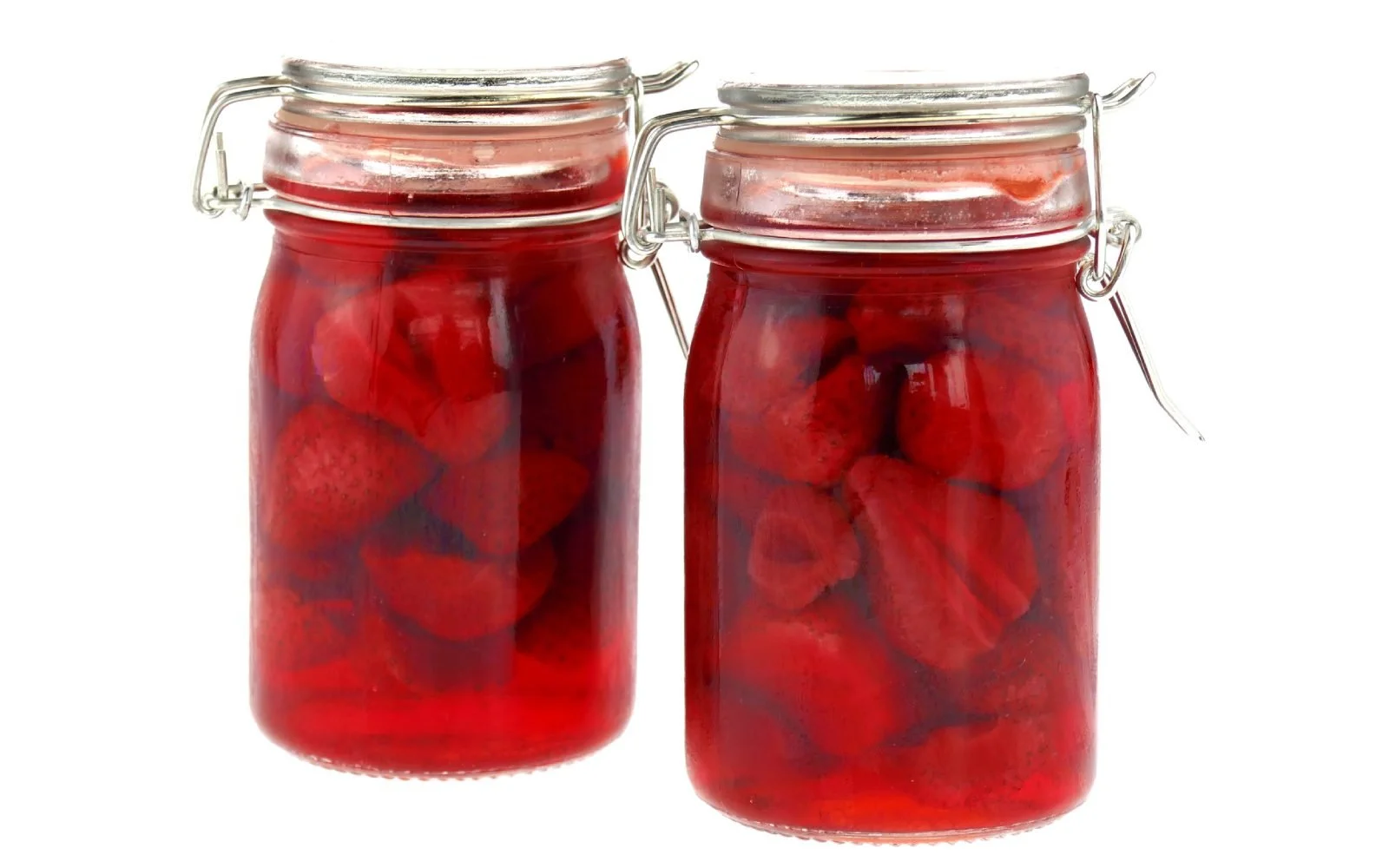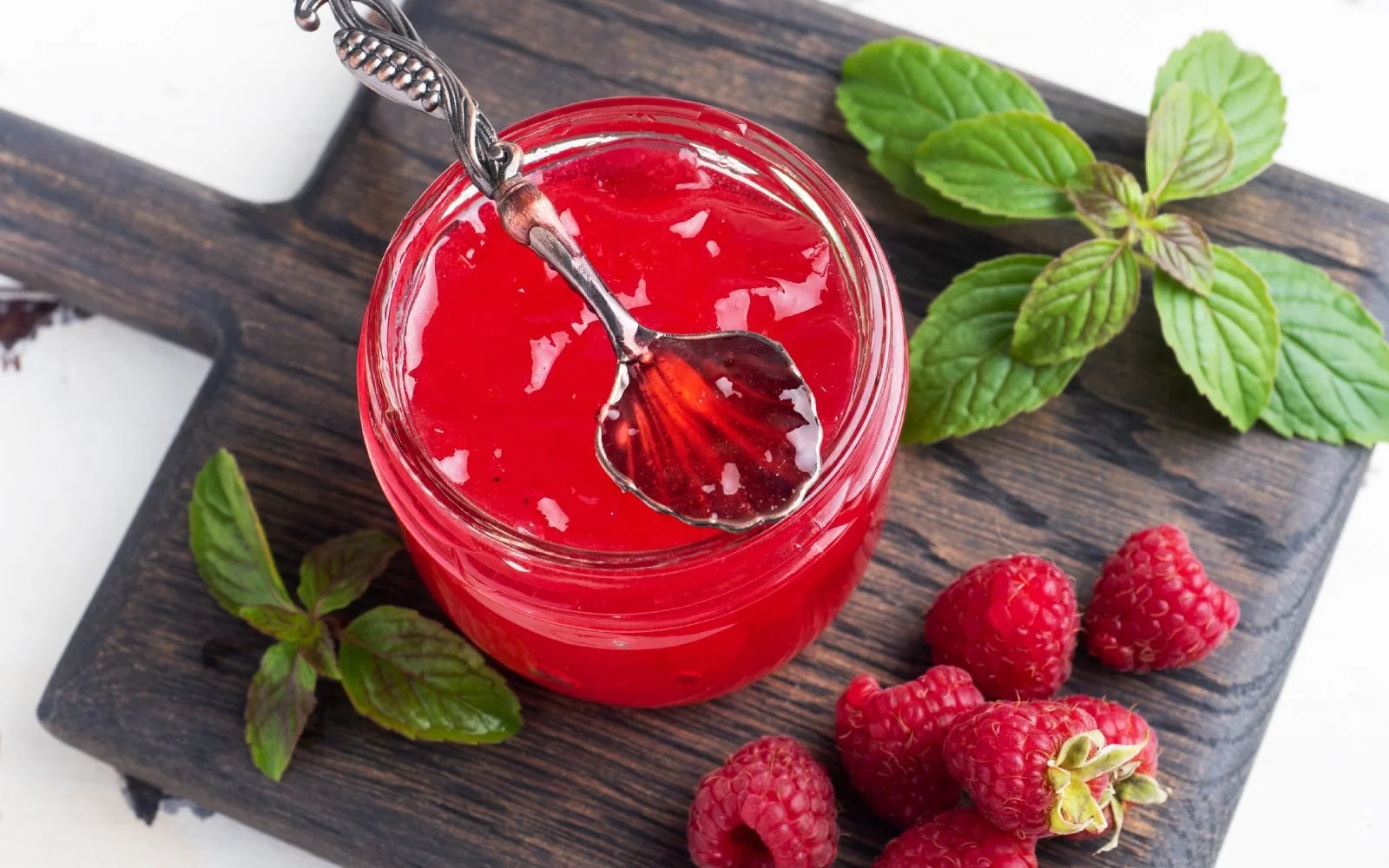Jellies, Jams, Compotes, and Preserves: What’s the Difference?
Discover > Texas Home Cooking > Jellies, Jams, Compotes, and Preserves: What’s the Difference?
Fruit spread is the ultimate dessert filling. When it comes to picking your fruity spread, do you prefer jelly, jam, compote, or preserves?
Prior to the advent of refrigeration, the practices of canning, pickling, and preserving fresh produce were much more than a mere hobby – they were crucial culinary techniques.
Back in the day, visiting a grocery store filled with their exported fruits and veggies was not an option, meaning families had to be inventive and resourceful when it came to preserving their food for the long term. The wide variety of seasonal produce available in Texas resulted in locals getting creative in a myriad of ways.
Predating the popularization of canning techniques, methods such as smoking, drying, salting, and fermenting were all used to prolong the shelf life of food products and keep them edible throughout the fall and winter months. It was not until the 19th century that sugar (how long does sugar last?) became cheap enough to use in large quantities, paving the way for the jellies, jams, competes, and preserves that we all know and love.
Today, however, the art of preserving is far more than a survival skill. Producers compete to craft exciting flavor combinations, offering vast arrays of artisanal small-batch products. Each type of preserve comes down to the same core ingredients – fruit, sugar, pectin (how long does pectin last?), and acid.
Nevertheless, the style of preparation, as well as the proportions of ingredients, differentiate one kind from the next. In today’s read, we’ll cover the basics of each type of fruit spread, helping you navigate the aisles with expertise.
Preserves Fruit Spread
How to make fruit preserves?
Often used as a blanket term for all styles of fruit spread, the term “preserves” refer specifically to whole or large pieces of fruit that have been preserved in their own juices, syrup or even water. The liquid is often clear in color and slightly gelled from the use of pectin.
Preserved fruit maintains its original shape, and should have a tender, juicy consistency. Add it to vanilla ice cream, waffles, or warm pastries for a refreshing burst of fruity flavor.
Jam
Often used to top a freshly made slice of toast, jam consists of crushed or chopped fruit cooked with sugar, pectin and acid until soft. As the fruit cooks, the water evaporates and the jam thickens, creating its satisfying, gooey consistency. Sugar serves as the primary method of preservation for jam. As a result, in the past, it was considered a valuable commodity at times when sugar was in scarce supply.
According to the FDA, jams made with a berry, tomato, orange or pineapple base must be 47 parts fruit by weight to 55 parts sugar in order to legally be labeled a “jam”. Bases made with stone fruits, currants, guava and gooseberry only need to be 45 parts fruit to 55 parts sugar. These numbers refer strictly to the weight of the fruit that has already been pitted, seeded and skinned. Jams can be spread on bread, added to layers of cake, or used as a flavorful filling for donuts (how long do donuts last?) and Danish pastries.
How to Make Jams without Pectin?
Pectin is activated by sugar and it needs a considerable amount of sugar to activate it and thicken your jam. If you are trying to limit your sugar intake, you can make jams without pectin.
All you need is to take fruit and cook it with some sugar, it will get thick to turn into jam. Fruits have naturally occurring pectin. To thicken the jam, just simmer the fruit and let the liquid turns to steam and evaporates.
This is simplified version of making jam without pectin.
Preserves vs Jam: Which is Better?
It depends on your preferences. If you like a more chunky mouthfeel, preserves are better. However, if you fancy thick strawberry spread, buy a jam.
Jelly
Unlike jam, jelly sports a transparent quality, due to its lack of fruit solids. To create its crystal-clear appearance, fruits are crushed and cooked to extract their natural juices before being strained through a “jelly bag”, ensuring that no solid particles slip through the fine mesh. Once strained, the juice is boiled rapidly along with sugar and pectin to create its firm shape. US government regulations state that jelly must contain at least 55% fruit juice to be sold on the market.
Compote
According to the Culinary Institute of America, compote can be broken down into two separate styles of fruit “sauce”. Made from fresh or dried fruit (how long does dried fruit last?), compote and coulis are both typically slow-cooked into a thick sugary syrup, which is often mixed with liquor and various spices. While compote boasts a chunky consistency, coulis is made from smooth, pureed fruit and can be sweet or savory. Serve fresh compote on a stack of thick morning pancakes, or alongside a mouthwatering cut of seared pork or duck. (What wine goes well with duck?)
To learn more about the ingredients and health benefits of all your favorite dishes, check out the TexasRealFood Promptuary.






